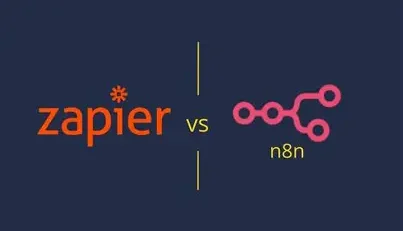7 ChatGPT Prompts for Effective Microlearning Content Creation
Microlearning is changing the way we approach education and training. With its bite-sized lessons, it allows learners to absorb information quickly and effectively. As someone who believes in the power of microlearning, I know it requires thoughtful content creation. Today, I’m excited to share seven prompts that can help you leverage conversational AI for creating impactful microlearning content.
Understanding Microlearning and Its Importance
Microlearning refers to the practice of delivering educational content in small, focused segments. This approach caters to our shrinking attention spans and busy lifestyles, making learning more accessible. Studies suggest that microlearning can enhance retention rates by up to 80% compared to traditional methods. This is something to consider if you want to boost your teaching effectiveness. By breaking down complex topics into bite-sized lessons, you will help learners engage more actively and hopefully enjoy the process.
When creating microlearning content, it’s essential to focus on clarity and relevance. Each lesson should revolve around a specific goal, allowing learners to master one concept before moving to the next. To accomplish this, using prompts can streamline your content creation process. Think of prompts as guiding questions to help you explore various topics and angles.
Prompt 1: “What is the core concept you want to convey?”
Start with a clear understanding of your primary objective. What do you want your learners to remember? This prompt helps you refine your focus.
– Narrow down the topic to one essential idea.
– Ensure it directly relates to your audience’s needs.
– Consider how the concept applies in real-world situations.
For example, if you are teaching a microlearning module on effective communication, identify what aspect you want to highlight, such as non-verbal cues or active listening.
Prompt 2: “What common misconceptions exist around this topic?”
Identifying misconceptions is a valuable exercise. This prompt allows you to address naiveté head-on.
– List out common myths.
– Explain each misunderstanding in simple terms.
– Offer clear, factual information to correct them.
By debunking myths, you will create content that adds real value for your learners. If your topic is time management, address misconceptions like “multitasking is the best way to be productive.” Providing clarity will enhance retention and comprehension.
Prompt 3: “How can you break this topic into smaller chunks?”
Microlearning thrives on digestibility. This prompt forces you to simplify complex ideas into smaller parts.
– Think about subtopics or angles that align with the core concept.
– Aim for smaller lessons that can be completed in just a few minutes.
– Help learners progress step-by-step, ensuring they don’t feel overwhelmed.
Using this strategy ensures that your course flows well and that learners stay engaged. For a topic such as stress management, consider breaking it down into sections like identifying stressors, relaxation techniques, and coping mechanisms.
Prompt 4: “What format will resonate best with your audience?”
Not all learners are the same, and different topics may suit different formats. This prompt is about understanding your audience’s preferences.
– Decide if your content will be presented via video, text, audio, or interactive assessments.
– Think about combining various formats for a richer learning experience.
– Always consider accessibility and ease of understanding.
Perhaps your audience prefers quick videos over lengthy articles. A short, engaging video may effectively convey key information about microlearning benefits in a straightforward, impactful way.
Prompt 5: “What scenarios can illustrate the application of this knowledge?”
Real-world examples can deepen understanding. This prompt encourages you to think about practical applications for your learners.
– Share relevant stories or case studies to underline key points.
– Use relatable scenarios that your audience can engage with.
– Foster discussions around the examples to enhance interaction.
If you’re teaching conflict resolution, you might offer scenarios from the workplace that highlight the importance of understanding different perspectives. Contextualizing the knowledge makes the learning experience much more powerful.
Prompt 6: “What questions should learners be able to answer after this lesson?”
This prompt helps set clear learning objectives. By defining what learners should take away, you create a focused lesson plan.
– Craft specific, measurable outcomes.
– Ensure the questions relate back to the core concepts and misconceptions addressed.
– Use these questions as assessment tools to gauge understanding.
For instance, if the lesson is about effective public speaking, you might want learners to answer questions like “What are the three key elements of a persuasive speech?” This ensures accountability in their learning journey.
Prompt 7: “How can you encourage reflection and application?”
Reflection is a crucial part of the learning process. This prompt drives you to think about how learners will take what they’ve learned and apply it in real life.
– Create prompts that encourage them to think about how they would use the information.
– Consider offering follow-up challenges to apply new skills in their own contexts.
– Foster a community of sharing ideas so that learners can discuss their experiences.
A great example might be ending a lesson on customer service with a prompt that asks learners to write down one way they can enhance their interaction with clients. This pushes them to actively apply their newfound insights.
Final Thoughts
Developing effective microlearning content is no small task, but it is incredibly rewarding. Each of these prompts is designed to spark ideas and guide you through the process. By maintaining clarity, relevance, and engagement, you can create content that captures attention and fosters deeper learning.
As I’ve shared, using social AI can greatly enhance your content creation process. Integrating these prompts will help you visualize your objectives while crafting compelling materials that resonate with learners. Microlearning is not just about delivering lessons; it’s about creating meaningful experiences.
As you embark on your microlearning journey, remember that the ultimate goal is to foster understanding and engagement. With these prompts, you are well on your way to creating microlearning modules that are both effective and enriching. Embrace the challenge and let your creativity flow as you create a more informed and engaged audience.












Leave a Reply